Nama Chocolate – The Silky, Melt-in-Your-Mouth Treat You Need to Try
I still remember the first time I tasted Nama Chocolate. I was wandering through the neon-lit streets of Shibuya in Tokyo, drawn into a cozy chocolate boutique by the scent of cocoa and curiosity. A tiny, square-shaped piece was placed gently on my tongue—and it disappeared before I could even think. It was rich, smooth, and unlike anything I’d ever tasted. That moment? It changed how I understood chocolate.
Nama Chocolate isn’t your average sweet treat. It’s a luxurious, velvety creation born in Japan, made with a perfect balance of fine chocolate and fresh cream. It feels almost like chocolate ganache but with an even softer, more luscious texture. Whether dusted in cocoa powder or infused with a hint of liquor, it melts effortlessly in your mouth, leaving behind layers of deep flavor and pure indulgence.
In this article, I’m diving deep into everything you need to know about this dreamy dessert: what Nama Chocolate actually is, what makes it so special, how to make it at home, and even whether it’s worth the splurge. If you’ve been wondering what the hype is all about or you’re simply craving a new culinary adventure, you’re in the right place.
Let’s get started with understanding the roots and meaning behind Nama Chocolate, and why it’s captured hearts around the world.
Table of Contents
What Is Nama Chocolate? A Japanese Delight with Global Appeal
The Origin of Nama Chocolate in Japan
If you’ve ever explored Japanese desserts, you’ve probably noticed how they strike a unique balance between tradition, elegance, and innovation. Nama Chocolate is a shining example of this culinary harmony.
The term was popularized in the late 1980s by Royce’, a premium chocolate brand based in Hokkaido. They launched a soft, ganache-like chocolate that was creamier than traditional European truffles, yet rich enough to feel truly indulgent. Inspired by the French term “ganache”, but rooted in Japanese minimalism and purity, Nama Chocolate was born—and it quickly took off.
What sets it apart is its use of fresh cream and high-quality couverture chocolate, often blended with a splash of liquor like brandy or whisky. This fusion of East and West not only created something delicious, but something that felt distinctly Japanese: refined, subtle, and deeply satisfying.
Today, you can find Nama Chocolate in boutique shops, luxury department stores, and even airport gift shops across Japan. It’s not just a dessert—it’s a cultural symbol of modern Japanese confectionery.
How Nama Chocolate Differs from Regular Chocolate
You might be thinking, “Isn’t this just fancy ganache?” Well, not quite. Nama Chocolate is ganache elevated to an art form.
Here’s a quick comparison table that breaks down the main differences:
| Feature | Nama Chocolate | Regular Chocolate |
|---|---|---|
| Texture | Ultra-soft, melts in seconds | Firm, requires chewing |
| Ingredients | Couverture chocolate, fresh cream, sometimes alcohol | Cocoa solids, milk, sugar |
| Storage | Must be refrigerated | Shelf-stable |
| Flavor Profile | Rich, creamy, slightly bitter or boozy | Sweet, varies widely |
| Origin | Japan (modern interpretation) | Global |
What makes it even more unique is its storage requirement. Unlike regular chocolate, Nama Chocolate has a shorter shelf life and must be kept cold to preserve its luxurious texture and flavor. That’s because it contains a high percentage of fresh cream, which gives it that silky mouthfeel.
Most commercial chocolate bars are designed to survive shipping, heat, and time. But Nama Chocolate? It’s delicate, fresh, and fleeting—just like the best moments in life.
Understanding the Meaning Behind “Nama” in Nama Chocolate
What Does ‘Nama’ Mean in Japanese Culinary Terms?
In Japanese, the word “Nama” (生) literally means “raw” or “fresh.” It’s often used in food culture to describe items that are unprocessed, pure, and unadulterated—like nama sake (unpasteurized sake) or nama ramen (fresh, uncooked noodles).
So when we say Nama Chocolate, we’re not talking about uncooked chocolate per se. Instead, it’s a reference to its fresh, delicate nature—the kind of treat that must be refrigerated, handled gently, and consumed within a short time after it’s made.
In fact, the “nama” designation is what sets this chocolate apart from most others. It signals that you’re getting something more perishable, more luxurious, and ultimately, more flavorful. Just like the fleeting cherry blossoms of spring in Kyoto, Nama Chocolate isn’t meant to last forever—it’s meant to be savored in the moment.
If you’ve ever tried fresh dairy-rich desserts like mousse or panna cotta, you’ll understand why the word “nama” carries such a special weight in the culinary world.
Why the Name Perfectly Describes This Type of Chocolate
When I first heard the term Nama Chocolate, I didn’t quite understand what made it different—until I tasted it. Then it made perfect sense.
The name beautifully reflects the texture, ingredients, and experience of this chocolate. It’s not just about being fresh—it’s about tasting chocolate in its most sensual, creamy, melt-away form. Each bite delivers something ephemeral, almost like it was made just moments ago.
The Japanese have a way of naming food that captures not only what it is, but how it should make you feel. In the case of Nama Chocolate, that feeling is soft, indulgent, and intimate. A little like velvet on your tongue.
This section helps deepen the cultural and linguistic understanding of the term and sets the stage for a deeper look into why it tastes so divine in the next part.
Ingredients and Composition – What Makes Nama Chocolate So Special
High-Quality Chocolate and Fresh Cream
One of the most remarkable things about Nama Chocolate is its simplicity. Unlike heavily processed sweets that rely on additives and preservatives, this delicacy is all about purity and balance.
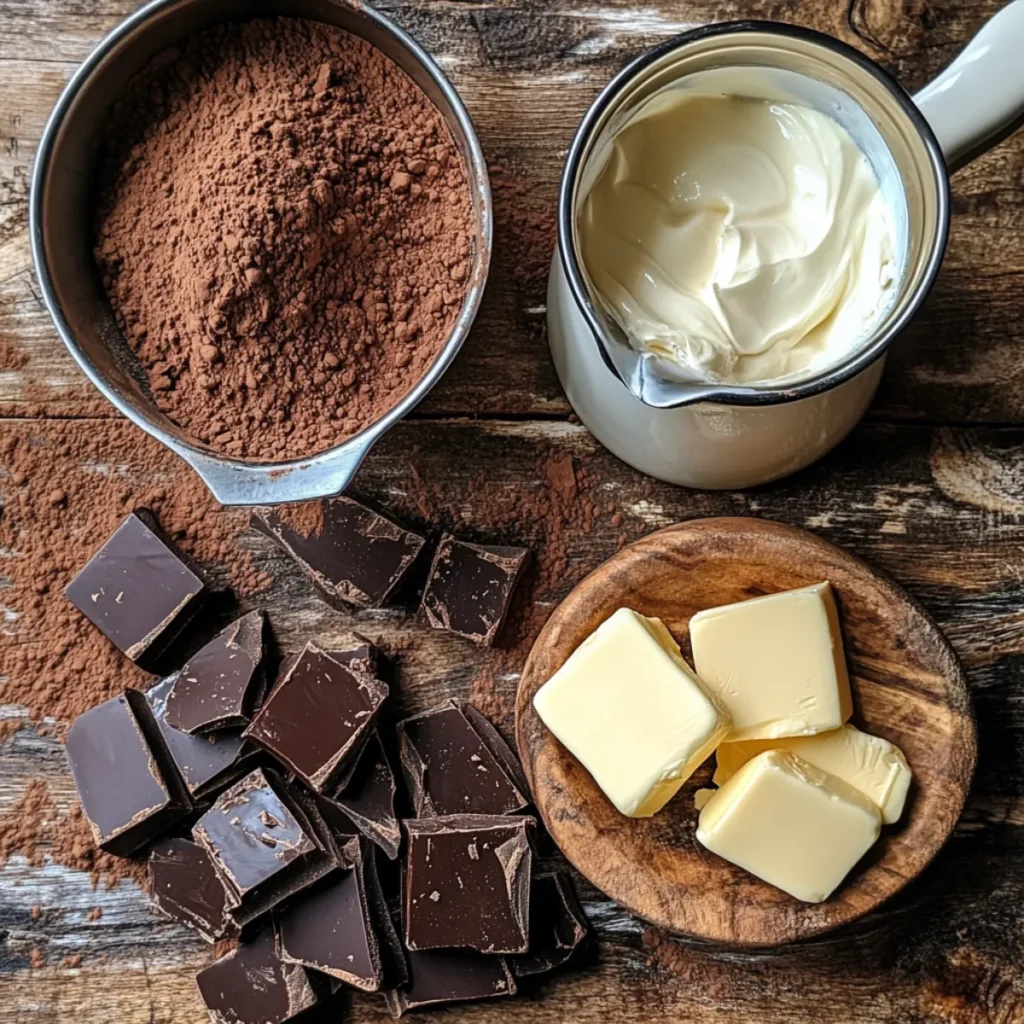
To create that signature melt-in-your-mouth texture, you only need two core ingredients: high-quality couverture chocolate and fresh heavy cream. That’s it. No fancy tools, no exotic ingredients, and—as you requested—no alcohol.
Couverture chocolate is key here. It contains a higher percentage of cocoa butter than standard baking chocolate, which is what gives Nama Chocolate its ultra-smooth consistency and glossy finish. I always recommend choosing a chocolate with at least 60–70% cocoa solids for the perfect blend of richness and depth.
And the cream? That’s where the magic happens. Fresh dairy cream softens the intense cocoa notes and creates a texture that’s closer to silky ganache than any chocolate bar you’ve ever tried.
Here’s a basic breakdown of what goes into classic, alcohol-free Nama Chocolate:
| Ingredient | Function | Notes |
|---|---|---|
| Couverture Chocolate | Provides structure, flavor & cocoa richness | Use dark or semi-sweet, high-quality |
| Heavy Cream | Creates creaminess and soft texture | Must be fresh, high-fat (35-38%) |
| Butter (optional) | Adds extra smoothness and richness | Not essential, but elevates the melt |
The Role of Butter and Cocoa Percentages in Authentic Nama Chocolate
Now, some recipes call for a small amount of unsalted butter—and let me tell you, it’s a game-changer. While optional, it helps give the finished chocolate a smoother mouthfeel and enhances the flavor without overpowering the cocoa.
Another important factor is the cocoa percentage in the chocolate you choose. Here’s how it affects the final product:
- 60–65% cocoa: Softer, more mellow, great for beginners
- 70–75% cocoa: Bolder, richer flavor, best for dark chocolate lovers
- 80% and above: Very intense, not recommended unless balanced with more cream
For my first attempt, I used a 64% dark chocolate with just cream and a touch of butter. The result? A velvety, pillow-soft bite that vanished on the tongue and left behind a smooth cocoa finish.
Taste and Texture – Why Nama Chocolate Melts in Your Mouth
The Signature Soft, Velvety Texture
Let me be honest—I’ve eaten a lot of chocolate. From gritty bars on long hikes in the Atlas Mountains to silky pralines in Paris. But nothing compares to that first bite of Nama Chocolate. The texture is what stunned me most. It doesn’t crunch. It doesn’t chew. It melts—almost instantly.
This melt-in-your-mouth quality isn’t just a coincidence. It’s the result of meticulous ingredient ratios and careful temperature control. By combining high-fat fresh cream with couverture chocolate, the resulting mixture has a low melting point, allowing it to dissolve smoothly the moment it touches your tongue.
What you get is something between a ganache and a mousse—firm enough to hold its cube shape when chilled, yet soft enough to glide across your palate without resistance.
I like to think of it as the chocolate version of silk.
Here’s a quick chart to compare textures across different chocolate types:
| Chocolate Type | Texture | Mouthfeel |
|---|---|---|
| Nama Chocolate | Ultra-soft, melts quickly | Creamy, rich, delicate |
| Ganache | Soft, slightly denser | Smooth, a bit thicker |
| Chocolate Truffle | Firm outer, soft inner | Contrast between shell and center |
| Chocolate Bar | Hard, requires chewing | Solid, less creamy |
How Flavor Profiles Vary by Brand and Ingredients
Although Nama Chocolate has a standard base, subtle flavor differences come from the type of chocolate used and any extra ingredients. And since we’re skipping alcohol here, all the flavor must shine from the chocolate itself.
- Using dark chocolate (around 70% cocoa) gives you a deep, bittersweet profile—perfect for those who enjoy bold flavors.
- Milk chocolate offers a sweeter, creamier experience with caramel undertones.
- You can also infuse flavors naturally with matcha, fruit purées, or espresso—adding complexity without compromising texture or purity.
When I made it at home with a touch of pure vanilla extract and Himalayan salt, the flavor bloomed in layers. First, the dark cocoa richness. Then, the mellow sweetness. Finally, the gentle creaminess lingered, almost whispering for another bite.
How to Make Nama Chocolate at Home Like a Pro
Essential Tools and Ingredients for Homemade Nama Chocolate
When I first tried making Nama Chocolate in my small kitchen back in Casablanca, I was surprised at how few tools I needed. Unlike complex desserts, Nama is minimalist—it thrives on precision, not extravagance.
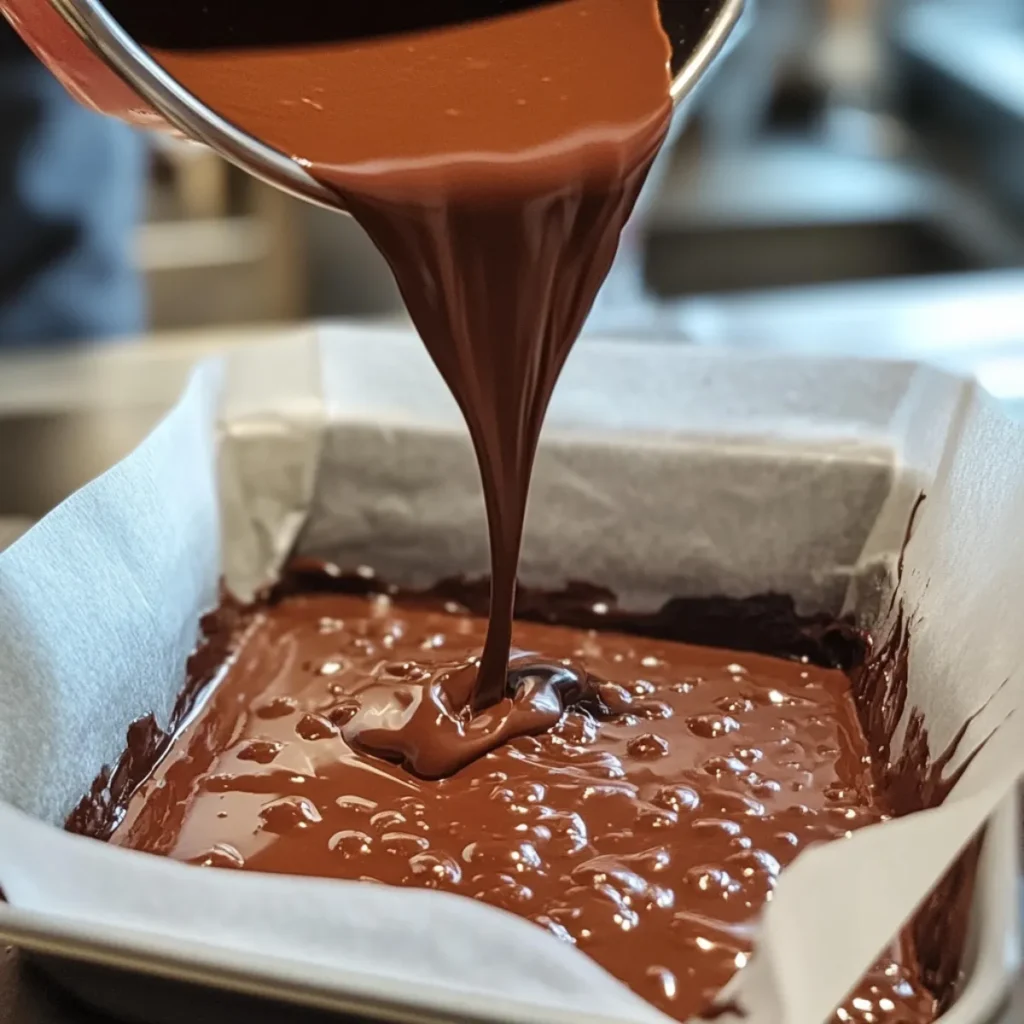
Here’s what you’ll need to get started:
Tools:
- Heatproof mixing bowl
- Rubber spatula
- Saucepan (for double boiler method)
- 6-inch or 8-inch square pan
- Parchment paper
- Fine mesh sieve (for dusting)
- Sharp knife (for clean cuts)
Check out more homemade dessert ideas if you’re building your skills in the kitchen and want to master elegant sweets beyond chocolate.
Ingredients:
| Ingredient | Quantity | Notes |
|---|---|---|
| Couverture chocolate | 400g (14 oz) | 60–70% cocoa for balanced flavor |
| Heavy cream | 200ml (7 fl oz) | High-fat (35–38%) for smooth texture |
| Unsalted butter (optional) | 15g (1 tbsp) | Adds shine and silkiness (optional) |
| Unsweetened cocoa powder | As needed | For dusting over the top |
| Vanilla extract | ½ tsp | Optional for added aroma |
Step-by-Step Guide to Crafting Perfect Nama Chocolate
Step 1: Prep the Pan
Line your square pan with parchment paper, allowing a bit to overhang the sides. This makes lifting the chocolate out later much easier.
Step 2: Melt the Chocolate
Chop your couverture chocolate into small pieces. Place it in a heatproof bowl over a pot of simmering water (double boiler method). Stir until fully melted and glossy. Remove from heat.
Step 3: Heat the Cream
In a separate saucepan, gently warm the heavy cream until just before boiling. You should see small bubbles forming along the edges—not a rolling boil.
Step 4: Combine Cream and Chocolate
Slowly pour the warm cream into the melted chocolate. Stir continuously with a spatula until smooth and fully blended. If using butter and vanilla extract, add them now.
Step 5: Pour and Chill
Pour the mixture into the prepared pan. Smooth the top with a spatula and tap gently to remove air bubbles. Cover with plastic wrap and refrigerate for at least 4 hours (overnight is even better).
Step 6: Cut and Finish
Once firm, lift the chocolate block from the pan using the parchment paper. Let it sit at room temperature for about 5 minutes to prevent cracking when cutting. Using a warm, sharp knife, slice into even cubes. Dust with cocoa powder using a sieve for that signature finish.
Pro Tip: Keep the knife clean and warm (dip in hot water, then dry) between cuts to get that perfect edge.
Top Brands and Where to Buy Nama Chocolate Online and Offline
Royce’ Chocolate: The Pioneer of Nama Chocolate
If you’ve ever passed through a Japanese airport or department store, chances are you’ve seen the famous navy-blue box stamped with the word “ROYCE’.” That’s not just branding—it’s history.
Royce’ is widely credited with inventing Nama Chocolate as we know it today. Founded in Sapporo, Hokkaido in 1983, the company was inspired by European ganache, but reimagined it with Japanese precision and minimalism. Their version? Smoother, fresher, more refined—and distinctly “nama.”
Royce’ Nama Chocolate comes in a range of flavors like mild cacao, Ecuador sweet, matcha green tea, and white chocolate, all made without alcohol in specific variations. I tried their mild cacao version during a winter trip in Nagano, and it was so good I bought two more boxes for the train ride home.
Here’s what sets Royce’ apart:
- Always uses fresh Hokkaido cream
- Comes with a mini cooling gel pack for freshness
- Neatly packed in square grids—ready to eat or gift
Other Popular Brands and Artisanal Options Around the World
While Royce’ is the original, other chocolatiers have caught on, offering their own takes on Nama Chocolate—sometimes called “fresh chocolate” or “Japanese-style ganache.”
Here are a few worth noting:
1. Mary’s Chocolate (Japan)
Another trusted Japanese brand offering smooth, creamy Nama Chocolate in beautifully packaged boxes. You’ll often find them during seasonal gift campaigns like Valentine’s Day.
2. La Maison du Chocolat (France/Japan)
Although not always labeled “nama,” this luxury French brand offers similar soft-textured chocolates that mirror the ganache-like style of Nama. Their cocoa blends and minimalist approach are ideal for fans of this treat.
3. Local Artisanal Brands in the U.S.
Small-batch chocolatiers are starting to create Nama-style chocolate for stateside audiences. Look for:
- High cocoa content (60–70%)
- Fresh cream listed as an ingredient
- Refrigerated shipping
I once discovered a local chocolatier in Portland offering a matcha Nama Chocolate with Oregon cream—it was a beautiful cross-cultural creation.
Storage, Shelf Life, and Best Ways to Serve Nama Chocolate
How to Store Nama Chocolate for Freshness
Here’s something I learned the hard way during a hot summer in Fez—Nama Chocolate doesn’t forgive poor storage. Unlike regular chocolate bars, this delicate treat is made with fresh cream and has a short shelf life. That’s part of its charm… and also its challenge.
Always keep Nama Chocolate refrigerated. Ideally, store it in an airtight container to prevent it from absorbing other fridge odors (like onions—trust me, that mistake only happens once). The temperature should stay consistent, around 32°F to 41°F (0°C to 5°C).
If you’re making it at home, follow these storage rules:
| Storage Method | Shelf Life | Notes |
|---|---|---|
| Refrigerator | 3–4 days | Best flavor and texture maintained |
| Freezer (optional) | Up to 1 month | Wrap tightly; texture may change |
| Room Temperature | Max 1 hour | Serve quickly; melts easily |
Avoid freezing unless absolutely necessary. While it extends the life of the chocolate, freezing can alter the texture, making it slightly crumbly instead of melt-in-your-mouth.
Serving Tips: When and How to Enjoy It
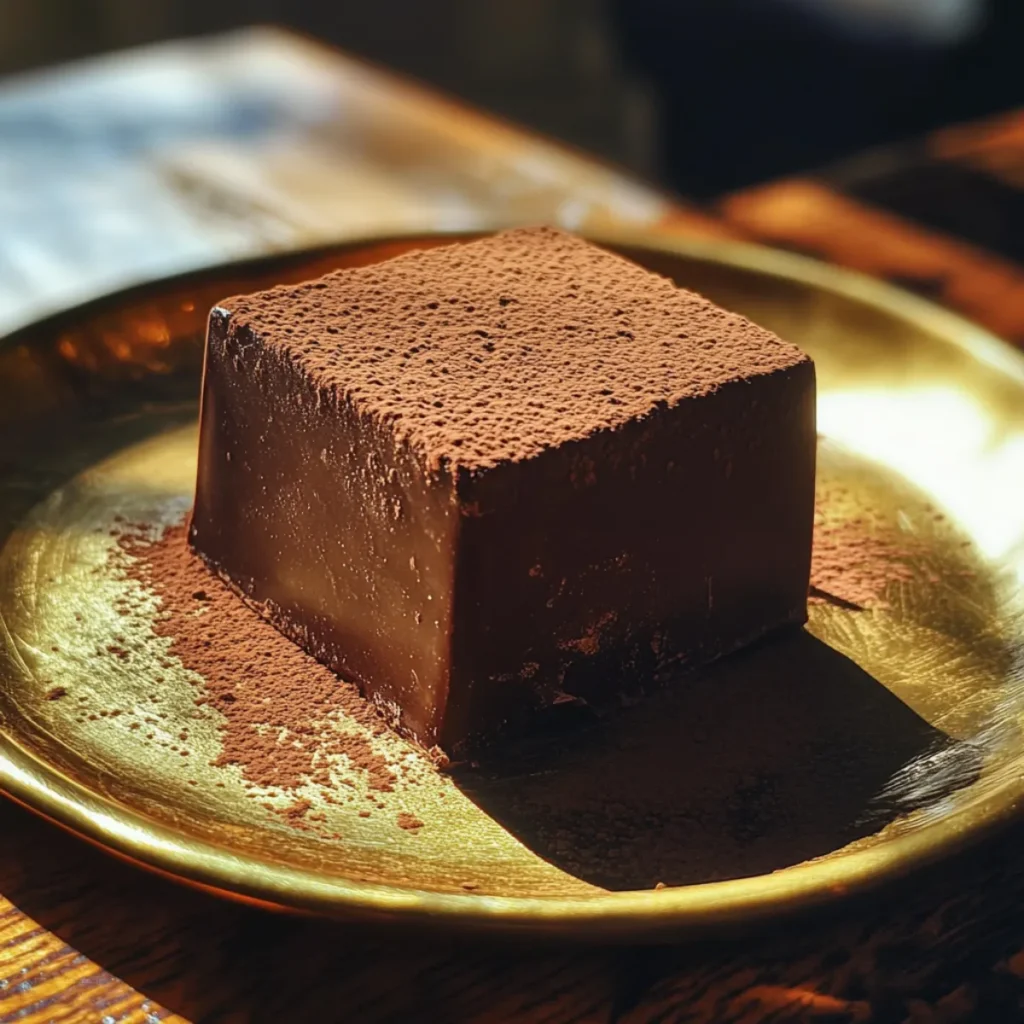
Serving Nama Chocolate is an experience, not just a snack. Here’s how I like to present it:
- Let it sit out for 5–10 minutes after removing from the fridge. This softens the edges and enhances flavor release.
- Use a clean, warm knife to cut precise cubes if not pre-sliced.
- Lightly dust with cocoa powder or matcha powder just before serving.
- Serve with a hot drink like green tea, coffee, or even a warm milk infusion to contrast the chill.
Whether it’s a quiet evening indulgence or a stunning addition to a dessert platter, Nama Chocolate adds elegance to any occasion.
Is Nama Chocolate Worth It? Cost, Quality, and Indulgence
Breaking Down the Price vs. Value
Let’s be real—Nama Chocolate isn’t cheap. Whether you’re buying a box from Royce’ or making it at home with quality ingredients, this is definitely not your average grocery store treat.
But here’s what I’ve found: it’s worth every bite.
A typical box of premium Nama Chocolate from a brand like Royce’ sells for anywhere between $18–$25 for 20 pieces. That might sound steep at first glance, but you’re paying for:
- High-quality couverture chocolate
- Fresh cream sourced locally
- Expert craftsmanship and freshness
- Luxurious packaging that’s gift-worthy
Homemade Nama Chocolate might cost a bit less—perhaps $10–$15 in ingredients depending on what you use—but it requires time, care, and temperature control.
The real question is: what are you buying it for?
- If you’re looking for a meaningful gift, a box of Nama Chocolate outshines just about anything else in its price range.
- If you’re a chocolate enthusiast (like me) craving a melt-away experience that lingers on your palate, the quality is undeniable.
- And if you’re exploring Japanese culinary artistry from your own kitchen—this is a perfect entry point.
Why Chocolate Lovers Say It’s a Must-Try Experience
When people describe Nama Chocolate, one word pops up over and over again: indulgent. And I think that’s the best way to put it.
It’s not an everyday snack. It’s a moment. A silky pause in a busy day. A little reward for getting through something hard. Or a surprise for someone you love.
Here’s why serious chocolate lovers can’t get enough:
- It has the silkiest texture of any chocolate on the market.
- The flavor is balanced and deep, not overly sweet.
- It offers a true sensory experience—cold at first, then warm and rich on the tongue.
You don’t need much to be satisfied. A couple of cubes after dinner with tea? Absolute heaven.
Health Considerations and Nutritional Facts of Nama Chocolate
Calories, Sugar Content, and Allergens
Let’s be honest—Nama Chocolate isn’t a health food. But it’s not pretending to be. What it offers is a moment of pure indulgence, made with real, quality ingredients. And in moderation, it’s far from the worst thing you could treat yourself to.
Here’s a general idea of what a typical cube (around 10–12g) of Nama Chocolate contains:
| Nutrient | Average per piece (approx.) |
|---|---|
| Calories | 55–65 kcal |
| Fat | 4–5g |
| Saturated Fat | 2.5–3g |
| Sugar | 3–5g |
| Protein | 0.5g |
| Sodium | <10mg |
Because it’s made with fresh cream and rich dark chocolate, it’s higher in fat than commercial chocolate bars. But here’s the upside—it’s also more satisfying, so you tend to eat less. One or two cubes truly feels like enough.
Allergen Alert: Most Nama Chocolate contains:
- Dairy (from heavy cream)
- Soy lecithin (often used in couverture chocolate)
- Cocoa solids
It’s typically gluten-free, and since we’ve skipped alcohol in our homemade version, it’s also a good fit for alcohol-sensitive diets. But always check ingredient labels or ask when buying from a brand.
Is Nama Chocolate a Healthier Indulgence Compared to Other Chocolates?
This is a tricky question, but here’s my honest take: yes, in some ways.
Why? Because Nama Chocolate uses fewer ingredients, no artificial stabilizers, and often a higher cocoa percentage than your average milk chocolate bar. Plus, the fresh cream offers natural fats instead of hydrogenated ones.
If you’re comparing it to overly processed chocolate candy, Nama comes out on top in purity and quality. It’s a whole-food indulgence, meant to be enjoyed in small amounts and appreciated, not mindlessly snacked on.
And maybe that’s the healthiest thing of all—learning to savor what you love.
FAQ Section
What is special about Nama Chocolate?
Nama Chocolate is special because of its luxurious texture and fresh, simple ingredients. Unlike regular chocolate, it combines high-quality couverture chocolate with fresh cream to create an ultra-smooth, melt-in-your-mouth experience. It’s meant to be served chilled, enjoyed slowly, and savored like a fine dessert—not just a snack. Its delicate nature and short shelf life make it feel like a fresh, handcrafted treat every time.
What does Nama mean chocolate?
In Japanese, “Nama” (生) means “raw” or “fresh.” So when you hear Nama Chocolate, it refers to chocolate made with fresh ingredients—primarily cream—giving it a soft, creamy texture that’s different from regular chocolate. It doesn’t mean the chocolate is raw, but rather that it’s freshly made, perishable, and intensely smooth, just like a fine ganache.
Is Nama Chocolate worth it?
Absolutely—Nama Chocolate is worth every bite if you value quality, flavor, and experience. While it may be pricier than standard chocolate bars, its rich texture and deep, balanced cocoa flavor make it a premium indulgence. Whether as a gift or a personal treat, it’s an experience that feels truly special, especially when made or served fresh.
What does nama taste like?
Nama Chocolate tastes rich, smooth, and deeply chocolatey—yet never overpowering. The fresh cream softens the intensity of the dark chocolate, creating a perfectly balanced flavor that’s velvety on the tongue. It’s mildly sweet with a clean finish, and depending on the cocoa percentage used, it can range from soft and mellow to bold and bittersweet. Think of it as the love child of a truffle and a chocolate mousse.
Conclusion: A Bite of Bliss, A Taste of Japan
Making and eating Nama Chocolate is more than just a culinary experience—it’s a moment. It’s the kind of treat you serve when you want to slow down, savor something truly special, or share a piece of joy with someone you love.
Whether you’re crafting it at home using just cream and good chocolate, or treating yourself to a silky box from a boutique brand like Royce’, Nama Chocolate brings a quiet elegance to the table. Its simplicity is its strength, and its softness—a reminder that sometimes the most luxurious things in life are the most fleeting.
Now that you’ve explored its origins, flavors, preparation, and purpose, all that’s left is one thing—go taste it.
If you want to see more indulgent ideas and recipes like this, follow along on Facebook where I share my favorite sweets and kitchen adventures every week. and Looking for inspiration? Try my Pinterest boards where I’ve saved mouthwatering chocolate creations and variations of Nama Chocolate you can make at home.
Print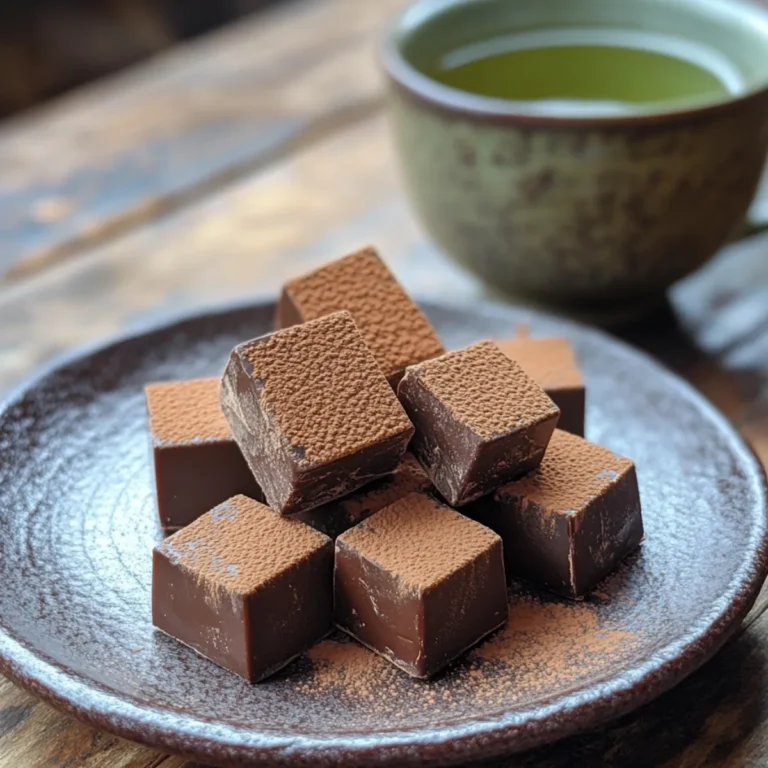
Nama Chocolate – The Silky, Melt-in-Your-Mouth Treat You Need to Try
Luxuriously soft and creamy, Nama Chocolate is Japan’s ultimate melt-in-your-mouth treat. Made with just chocolate and cream, it’s a ganache-style confection that delivers pure indulgence in every bite.
- Total Time: 20 minutes + chilling
- Yield: 25 small cubes
Ingredients
- 400g (14 oz) couverture chocolate (60–70% cocoa)
- 200ml (7 fl oz) heavy cream (35–38% fat)
- 15g (1 tbsp) unsalted butter (optional)
- ½ tsp vanilla extract (optional)
- Unsweetened cocoa powder, for dusting
Instructions
- Line a 6-inch or 8-inch square pan with parchment paper, leaving overhangs.
- Chop the chocolate finely and melt over a double boiler until smooth.
- In a separate pan, warm the cream just before boiling.
- Slowly mix the warm cream into the melted chocolate, stirring gently until fully incorporated.
- Add butter and vanilla extract if using, and stir until smooth and glossy.
- Pour the mixture into the lined pan, smooth the top, and refrigerate for at least 4 hours or overnight.
- Once set, lift the chocolate using the parchment, let sit 5 minutes, and slice into cubes using a warm, sharp knife.
- Dust with cocoa powder before serving.
Silky melted chocolate is poured into a mold for the perfect Nama finish.
Notes
Use high-quality couverture chocolate for best results. Keep refrigerated and consume within 3–4 days for ideal freshness and texture.
- Prep Time: 15 minutes
- Cook Time: 5 minutes
- Category: Dessert
- Method: No-Bake
- Cuisine: Japanese
Nutrition
- Serving Size: 1 cube
- Calories: 60
- Sugar: 4g
- Sodium: 5mg
- Fat: 5g
- Saturated Fat: 3g
- Unsaturated Fat: 2g
- Trans Fat: 0g
- Carbohydrates: 6g
- Fiber: 0.5g
- Protein: 0.5g
- Cholesterol: 10mg
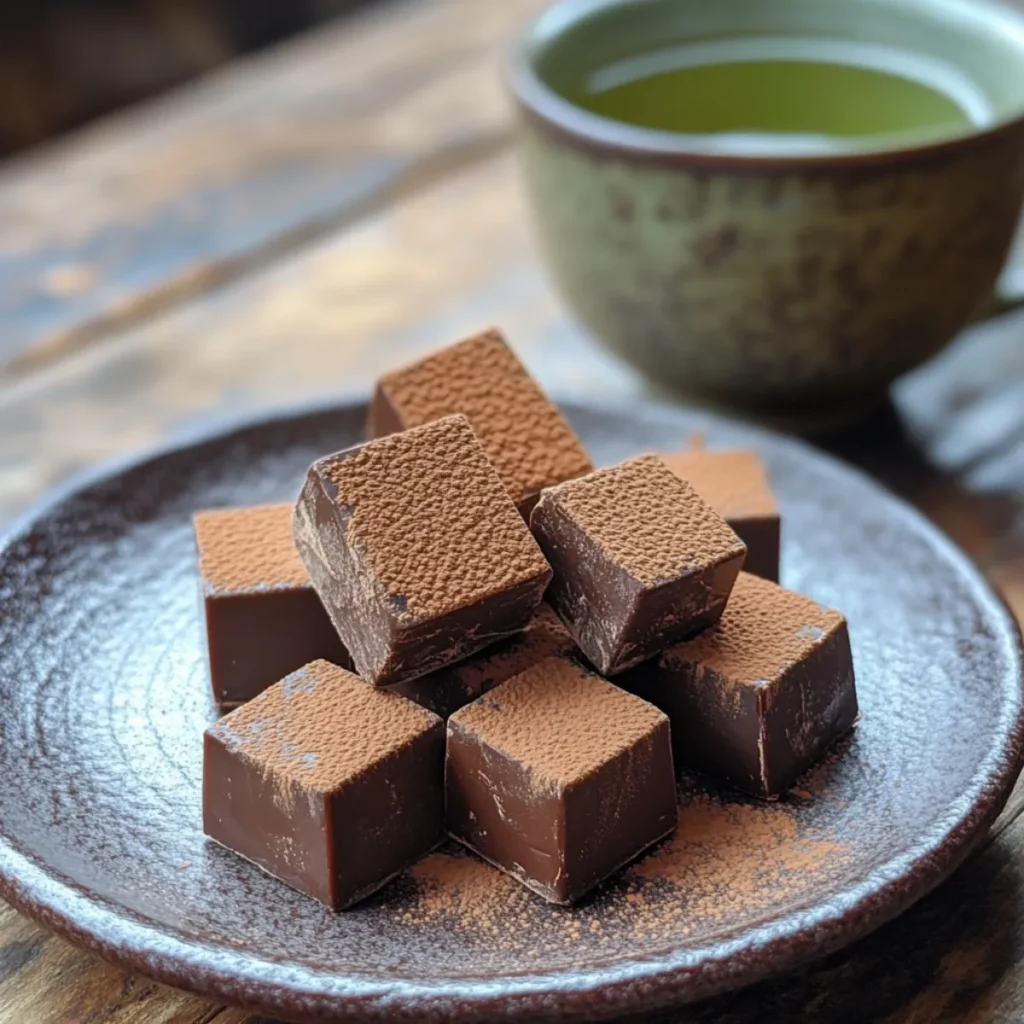
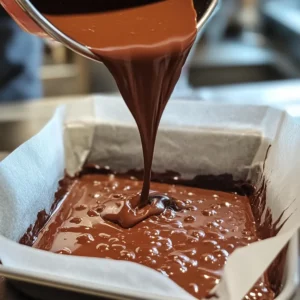
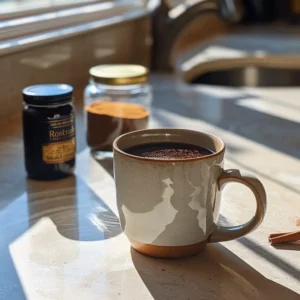






9 thoughts on “Nama Chocolate – The Silky, Melt-in-Your-Mouth Treat You Need to Try”